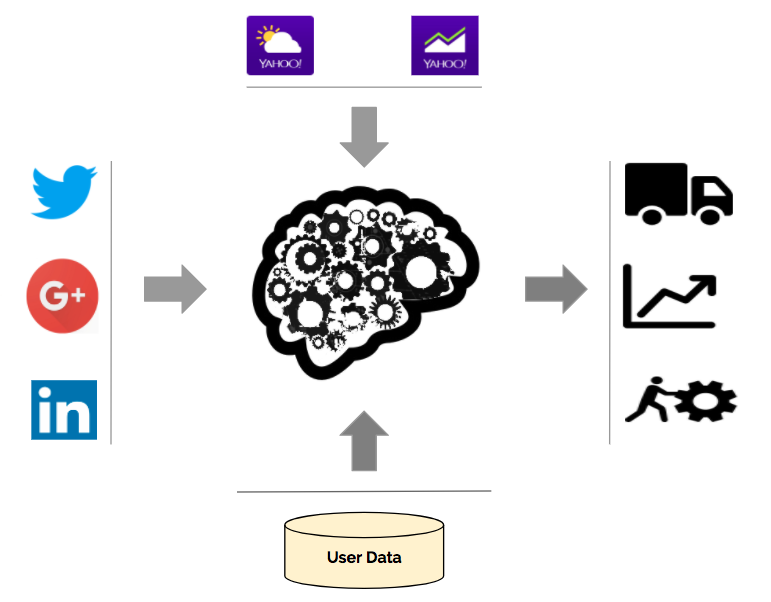In today’s fast-paced business world, effectively managing the flow of goods and services is a top business priority. Supply chain analysis takes precedence in understanding and optimizing the complex network involved in delivering products to customers. In this article, the importance of supply chain analysis will be delineated by its components, techniques, and practical applications. Recommendations for effectual and rigorous analysis and data-driven methods will be offered, accentuated by the benefits of supply chain analysis in relation to reaching company objectives. Let’s take a look at the realm of supply chain analysis and available methodologies to equip your business for agility in a competitive and ever-evolving market.
What Is Supply Chain Analysis?
Supply chain analysis is a comprehensive evaluation of the processes concomitant with creating and distributing products and services. The central objective is to identify and improve inefficiencies within the supply chain, ultimately increasing operational efficiency, reducing costs, and improving customer satisfaction. Analyzing the flow of materials, information, and finances throughout the supply chain creates opportunities for businesses to retrieve valuable insights that can potentially improve areas such as procurement, manufacturing, logistics, and retail operations. Not only does this comprehensive allow organizations to streamline operations, manage risks, and adapt to market changes, it affords the company a competitive edge by aiding in achieving data-driven decision making.
Key Components of the Supply Chain
The supply chain comprises a variety of interconnected parts, each with an important role in delivering products and services to the end customer. Let’s explore these essential components.
Suppliers and Procurement
At the very beginning of the supply chain are the suppliers who supply the material necessary for production. A smooth supply chain is enabled by effective procurement strategies and good relationships with reliable suppliers to ensure a smooth supply chain. These relationships are characterized by factors such as quality, cost, delivery times, and compliance. Cultivating strong and seamless relationships with key suppliers through communication and collaboration can enhance supply chain performance and minimize risks.
Manufacturing and Production
The manufacturing and production phase does not only encompass transforming raw materials and components into final products, it extends to detail-oriented and efficient processes such as just-in manufacturing, quality control measures and the utilization of advanced technologies. Such processes are engineered to reduce waste, costs, maintaining quality and customer satisfaction as well as
Logistics and Distribution
The life cycle of products spans from transportation to distribution centers to storage warehouses, and eventually to customers. Logistical aspects of the supply chain are distinguished by tasks like managing inventory, planning transportation, and developing distribution strategies. Choosing the best transportation methods (like air, sea, rail, or road) based on cost, speed, and reliability can improve logistics management. While using efficient warehouse practices, keeping inventory levels optimized, and using technologies like RFID and GPS to improve distribution efficiency and visibility in the supply chain.
Retail and End-Consumer
Last but not least, the final step in the supply chain is the distribution of products through retail channels. Retail management includes tasks like stocking shelves, inventory management, and providing customer service. In today’s digitized retail climate, businesses need to blend physical stores with online platforms to create a smooth experience for customers. Good retail strategies, like planning product selection, pricing, and building relationships with customers, are important for meeting expectations and keeping customers loyal to the brand.
Types of Supply Chain Analysis
There are various methodologies and approaches to assess different parts of the supply chain when initiating supply chain analysis. Let’s examine the main types of supply chain analyses.
Material Flow Analysis
As tacit in the name, material flow analysis concerns itself with monitoring the flow materials within the supply chain. Consider elements such as mapping the flow of raw materials, components, and finished products from suppliers to consumers. By visualizing and analyzing this flow, businesses can pinpoint areas of inefficiency and opportunities for enhancement. Employing this analysis can lead to optimized inventory levels, shorter lead times, and more efficient logistics, resulting in cost reduction and increased customer satisfaction.
Inventory Analysis
Inventory management and inventory analysis is a crucial part of supply chain operations, involving the evaluation of inventory levels, turnover rates, and the implementation of strategies to maintain optimal inventory levels throughout the supply chain. Techniques like ABC analysis, EOQ models, and JIT inventory management can assist businesses in reducing excess inventory, lowering carrying costs, and ensuring the availability of essential materials and products as required.
Cost Analysis
Highlighted in the variation of analysis in the supply chain is the examining and assessing the different expenses related to obtaining, making, transporting, and delivering products and services. The purpose is to devise plans to reduce costs while boosting efficacy. It is imperative for companies to consider factors like material, labor, transportation, and overhead costs when strategizing to improve, negotiate better deals with suppliers, and implement cost-saving measures while maintaining quality and customer satisfaction.
Risk Analysis
Risks are an inevitable aspect of business. In the context of the supply chain, risks can range between natural disasters to cyber threats. To manage these risks, businesses need to analyze potential threats, assess their likelihood and impact, and create strategies to mitigate them. Techniques like scenario planning, vulnerability assessments, and risk modeling can help identify and address risk management, ensuring business continuity and minimizing disruptions to operations and customer satisfaction.
Performance Analysis
Performance analysis in the supply chain involves assessing the effectiveness and efficiency of different processes and activities. This is done using key performance indicators and metrics to measure and monitor performance across various supply chain components. Common KPIs include on-time delivery rates, inventory turnover ratios, order fulfillment cycle times, and customer satisfaction levels. By consistently evaluating these metrics, businesses can identify areas for improvement, compare their performance to industry benchmarks, and implement strategies to improve overall supply chain efficiency.
Examples of Supply Chain Analysis
Supply chain analysis can drive operational efficiency, cost savings, and improved customer satisfaction in different sectors as demonstrated by practical applications and real-world examples. In the automotive industry, a manufacturer utilized supply chain analysis to improve operations and reduce costs. While in the retail sector, a chain implemented data-driven inventory analysis to enhance product availability and increase sales. Furthermore, in the consumer electronics industry a company used supply chain risk analysis to mitigate potential disruptions and ensure resilience. Like the aforementioned example, you too can use supply chain analysis to deliver products to your customers without compromising on quality.
Benefits of Supply Chain Analysis
Analyzing the supply chain thoroughly can provide various advantages that can greatly influence a company’s competitiveness, profitability, and customer satisfaction. Let’s outline some of the benefits.
Boost Value
Effective supply chain analysis helps businesses identify and remove inefficiencies, improve processes, and make the most of resources in the supply chain. This leads to cost reduction, faster delivery times, and better product quality, ultimately boosting value for customers and stakeholders. By delivering products and services more efficiently and cost-effectively, while maintaining high quality standards, businesses can gain a competitive advantage, build customer loyalty, and increase market share and profitability.
Eliminate Weak Links
Supply chains can have weak points that can hinder performance. Supply chain analysis helps identify these weak points, such as inefficient suppliers or bottlenecks in logistics. By addressing these weak points through improvements, businesses can strengthen their supply chain and ensure smooth operations.
Strengthen Planning
It’s paramount to equip your business to remain resilient in a volatile market. Analyzing supply chains can help businesses reinforce their planning and be better prepared for unexpected disruptions or changes in demand. By studying past data, predicting trends, and identifying risks, companies can create backup plans and take proactive steps to minimize the impact of unforeseen events. This improved planning allows organizations to quickly adapt to market changes, adjust to shifts in supply and demand, and ensure a steady supply of products and services to customers.
Improve Forecasting
Accurate forecasting is an indispensable tool in successful supply chain management, allowing businesses to align their production, inventory, and distribution strategies with expected demand. Supply chain analysis uses advanced analytics and data-driven methods to enhance forecasting accuracy. By examining past sales data, market trends, and customer behavior, businesses can create more precise demand forecasts, leading to better inventory management, production planning, and resource allocation. The results? Waste reduction and enhanced customer satisfaction.
Discover resources to equip your business for mid to long-term supply planning with Intuendi AI.
Data-Driven Supply Chain Analysis
As the world continues to gravitate towards data-driven insights, supply chain analysis relies more and more on using large amounts of data and cutting-edge technologies to gather research and inform decision-making.
Role of Big Data in Supply Chain Optimization
Big data analytics has transformed supply chain management by allowing businesses to collect and analyze large amounts of data from different sources. In turn, businesses gain real-time insights, identify trends, and make informed decisions to optimize supply chain operations. This approach leads to increased efficiency, cost savings, and better customer experiences.
Technologies Leveraging Supply Chain Data (AI, IoT, Blockchain)
Cutting-edge technologies are revolutionizing supply chain management. AI and ML algorithms analyze data to predict demand and optimize inventory levels. IoT devices track goods and provide real-time data for proactive decision-making. Blockchain technology enhances transparency and security in supply chain operations.
Supply Chain Management (SCM) Software
Businesses use specialized software known as Supply Chain Management (SCM) software to effectively manage and analyze the complexities of modern supply chains. These software platforms streamline and optimize various aspects of supply chain operations, enabling data-driven decision-making and enhancing overall efficiency. There are different types of SCM software available, such as Enterprise Resource Planning (ERP) Systems, Supply Chain Planning (SCP) Software, Transportation Management Systems (TMS), Warehouse Management Systems (WMS), and Supply Chain Visibility Solutions, each addressing specific needs within the supply chain. By leveraging these SCM software solutions, businesses can gain a comprehensive view of their supply chain operations.
Methods and Techniques in Supply Chain Analysis
Supply chain analysis uses a range of methods and techniques to assess and improve supply chain operations, including both qualitative and advanced quantitative and predictive analytics.
Qualitative vs Quantitative Analysis
Qualitative analysis involves subjective assessments and observations, while quantitative analysis focuses on numerical data. Both approaches are valuable in supply chain analysis, with qualitative analysis providing context and identifying intangible factors, and quantitative analysis providing measurable insights. The integration of both approaches is often the most effective way to make informed decisions and measure the impact of changes in the supply chain.
Predictive Analytics in Supply Chain Management
By using data, statistical models, and machine learning, Predictive analytics can predict future trends and behaviors in the supply chain. Businesses can predict demand, identify potential disruptions, and ameliorate inventory and production planning when analyzing data patterns and relationships. Common applications include demand forecasting, supplier risk assessment, inventory optimization, and predictive maintenance. Integrating predictive analytics into supply chain management enables businesses to make proactive, data-driven decisions.
Challenges in Modern Supply Chain Analysis
Supply chain analysis has many advantages but also comes with challenges. Businesses must navigate complexities and risks in order to effectively manage their supply chains in today’s fast-changing environment.
Managing Supply Chain Risks
Supply chains are susceptible to various risks such as natural disasters, supplier disruptions etc. Recognizing and circumventing risks allows for business continuity and minimizes the impact on operations and customer satisfaction. Strategies for managing supply chain risks include implementing robust cybersecurity measures to protect against cyber threats, developing contingency plans for physical disruptions, implementing supplier risk management programs, and building resilient and agile supply chains to quickly adapt to changing market conditions.
Sustainability and Ethical Considerations in Supply Chains
In recent times, there has been a growing emphasis on sustainability and ethical standards in supply chains. Consumers and stakeholders are calling for businesses to be more transparent and accountable for their impact on the environment, labor practices, and social responsibilities.
When addressing sustainability and ethical considerations in supply chain analysis, evaluating the environmental impact, labor practices, and product traceability within the supply chain is key. This includes assessing carbon footprint, resource consumption, and waste generation, ensuring fair labor practices and safe working conditions, implementing systems for product traceability, and enforcing ethical sourcing policies. Businesses can reduce risks, improve their reputation, and contribute to a more sustainable global supply chain by confronting these concerns.
Impact of Globalization and Economic Uncertainty
Today’s global economy has created complex supply chains that are vulnerable to external factors like economic uncertainties, trade policies, and geopolitical tensions. These factors can impact supply chain strategies and operations, requiring careful analysis and planning. Globalization has extended supply chains across countries, increasing the risk of disruptions. Economic uncertainties such as recessions and market volatility can also affect supply and demand dynamics. To navigate these challenges, businesses must conduct thorough supply chain analyses, including risk assessments, scenario planning, supply chain diversification, and agile strategies. By proactively seeing to these challenges, businesses can enhance the resilience and adaptability of their supply chains .
How to Conduct a Supply Chain Analysis
So far, we’ve discussed the importance of supply chain analysis, its components, techniques and practical applications, as well as outlined benefits and challenges pertaining to this form of analysis. Now we can look into conducting a supply chain analysis. Various metrics and steps are undertaken to analyze the supply chain, gather data and implement results. Here is a summary of the main stages in this process:
Preparation and Data Collection
Preparation and Data Collection involves clearly defining objectives and scope, assembling a cross-functional team, identifying data sources, collecting and validating data, and establishing baselines and KPIs for supply chain analysis. This process ensures that the analysis is focused, collaborative, data-driven, and measurable.
Data Analysis Techniques
After collecting and verifying data, companies can use various analytical methods to gain insights and find ways to improve their supply chain operations. Through statistical analysis, techniques like regression analysis and correlation analysis can be used to identify patterns and trends in the data. Simulation modeling helps create computer-based models to simulate different scenarios and identify bottlenecks or test potential changes. Optimization techniques use algorithms to allocate resources efficiently and minimize costs within the supply chain. Visualization tools can present analysis results in a clear way, making it easier for stakeholders to make data-driven decisions. Benchmarking involves comparing supply chain performance to industry standards or competitors to find areas for improvement and set realistic goals.
Interpretation of Results
After analyzing the data, it is important to interpret the results in relation to the business objectives and strategies. This process is undergirded by identifying areas in the supply chain that need improvement, prioritizing these areas based on impact and resources, developing actionable recommendations, and involving key stakeholders in the process. Their input is essential for successful implementation.
Implementation of Findings
After completing the analysis and developing recommendations, the next step is to implement the findings and drive continuous improvement. Consider creating a detailed implementation plan with specific actions, timelines, and responsible parties. Of importance is securing organizational buy-in by communicating the plan to stakeholders and conducting pilot programs to test the proposed changes. Monitoring and measuring the progress of the implemented changes is crucial, as is treating supply chain analysis as an ongoing process to identify new opportunities for improvement.
Why Do Businesses Need Supply Chain Analysis?
Not only is supply chain analysis a matter of priority in today’s fast-paced business environment, it supports organizations looking to stay competitive and succeed in the long term. A comprehensive and data-driven approach aids businesses in managing their supply chains, streamlining operations, reducing costs, and improving customer satisfaction. Supply chain analysis also helps businesses address key challenges such as managing risks, incorporating sustainability practices, and adapting to global dynamics. With the integration of advanced technologies like big data analytics and artificial intelligence, supply chain analysis has become even more efficient and effective. Moving forward, businesses that prioritize supply chain analysis will be better equipped to meet customer demands, drive innovation, and achieve sustainable growth in a constantly changing marketplace.
Learn how Intuendi AI can improve your supply chain management.






